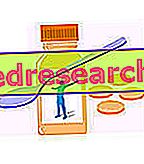
the first trick to follow to reduce the possibility of incurring bone loss or osteoporosis is to guarantee the minimum calcium intake with food .
Obviously, if to increase osteoporosis it was enough to increase the intake of calcium deriving from milk and dairy products, there would be no great difficulty; unfortunately, this is not the case. We begin by defining the pathology of osteoporosis:
"the term osteoporosis means a condition of bone rarefaction (especially trabecular) which induces a greater risk of skeletal fractures, although osteoporosis is generally considered a bone disease, it cannot be excluded that it is often also involved a paraphysiological process predisposing to a greater risk of pathological development ".
Football Requirement:
- Infants 500mg / day
- Children 800-1000mg / day
- Males> 11 <60 years 1200-800mg / day
- Females> 11 <50 1200-800 mg / day
- Females> 50 years 1200-1500mg / day
Osteoporosis is divided into primary and secondary, but the primary form constitutes 95% of diagnosed cases; among these we further distinguish:
- idiopathic osteoporosis (rare)
- type I or post-menopausal osteoporosis (hormonal alteration)
- type II or senile osteoporosis (immobilization, reduced contribution of important micronutrients, reduced endogenous synthesis of calciferol vit D).
Need of Calciferol / vit D ::
- Infants 10-25mg / day
- Children 0-10mg / day
- Males 0-10 / 15mg / day
- Females 0-10 / 15mg / day
- Pregnant and nursing females 10mg / day
Here is that another unknown factor is added to the calcium intake: vit. D or calciferol. This water-soluble vitamin carries out very important para-hormonal functions; it is NOT contained in milk and its derivatives and, in reality, it seems that its food intake is not as important as calcium, because, thanks to the ultraviolet rays of the sun (UV rays), the organism is able to to synthesize calciferol starting from dehydro-cholesterol. However, the LARN have proposed specific recommended rations.
Now that we have clarified the importance of the intake of alimentary calcium (of which milk and dairy products are rich) associated with the contribution / synthesis of vit. D in order to prevent the onset of osteoporosis type II (senile), we try to understand why often (and not always) the consumption of milk and derivatives and the correct exposure to sunlight are not sufficient to guarantee the state of health of the skeleton.
If it is true that for skeletal homeostasis it is essential to introduce calcium and have vit. D, it is equally true that this mineral is influenced by numerous other variables that alter its bioavailability.
- Bioavailability is the ratio between the ABSORPTION and the EXCEPTION of a molecule with respect to the net USE of which the organism is able to take advantage.
First of all, let us remember that in the healthy adult the intestinal absorption capacity of calcium is around 30-40%, but at the same time, the capturing capacity of this mineral is inversely proportional to its concentration; It therefore seems obvious that consuming VERY HIGH portions of milk and dairy products in an attempt to increase calcium intake is not an effective preventive therapy against osteoporosis. Rather, it is desirable that the consumption of these foods be distributed more widely both during the week and (possibly) during the day. Calcium absorption capacity also varies from one food to another; for example, in some vegetables such as cabbage and broccoli the uptake of the mineral reaches 50-60% of the total, while in milk and dairy products only 30-35% and in the beans only 20%. We try however not to forget that in the cabbage we find 44mg of calcium per 100g of edible part, while in whole cow's milk 120mg / 100g well, the triple! Without considering that dairy products and other derivatives reach 500 and sometimes exceed 1000mg / 100g.
Absorption capacity also depends on intra and inter individual characteristics; for example age: a child reaches 60% of the total absorption of food calcium, while a woman in menopause about 7-10%.
Other nutritional factors also contribute to the absorption of calcium; among these, the most important are:
- The amount of food phosphorus (P)
- The presence or absence of chelators, such as oxalates and phytates
- Lipid excess
- Excess of dietary fiber
- Excess coffee
Phosphorus eagerly competes with calcium in intestinal absorption, therefore, an excess of P in food can frustrate the introduction of calcium in food; some foods, such as meat, fish and some mature cheeses, contain very high amounts of P and if consumed FREQUENTLY IN EXCESSIVE PORTIONS can negatively affect the calcium balance / P. The optimal ratio for calcium absorption is: Ca / P = 2: 1.
What often happens to regular consumers of fruit, vegetables and legumes is to underestimate the concentration of some anti-nutritional molecules. These are chelating agents and excess dietary fiber. Chelating agents attach to calcium and hinder their absorption, while excess fiber increases fecal transit, decreasing absorption time and excessively gelling / hydrating the faeces, diluting the nutrients. It seems obvious that not even the excessive consumption of vegetables and legumes containing calcium can increase their intake and bioavailability by preventing osteoporosis; however, even in this case the reasonableness of the food portions can help us.
It has also been shown that coffee abuse negatively affects the intestinal absorption of calcium, as well as lipid excess; this, which frequently manifests itself with the excessive consumption of condiments, fatty meats, industrial sweet or baked products and cheeses made from whole milk, creates a "chemical barrier" that hinders the absorption of minerals, including the football.
Fortunately, there are also conditions that FAVOR the absorption of calcium; between these:
- The presence of lactose (contained in milk and dairy products)
- Lysine and arginine amino acids
- The activity of intestinal bacterial flora (favored by the intake of prebiotics and enhanced by probiotic intake)
- Physical exercise
Taking stock of the situation, it is essential to consume food portions of milk, dairy products, yogurt, cheeses, legumes and vegetables, but also dried fruit and some fishery products with sufficient frequency to absorb calcium. Furthermore, it is advisable to avoid excess: fats, fiber and chelating agents. It would be advisable to ensure exposure to sunlight, especially in the spring and summer months, and constantly perform physical sports.
Now, let's make sure that the absorbed calcium is properly metabolized.
There are also unfavorable conditions for calcium metabolism, thus potentially favoring the onset of osteoporosis. Some of them do not depend on food and they are well defined pathologies; this is the case of hypersecretion of parathyroid hormones, reduced secretion of estrogen (physiological in post-menopause) or hypercalciuria (typical of renal failure); while others are caused by food.
Metabolic acidosis, caused or worsened by the excessive consumption of animal proteins (present in meat, fish, eggs, milk and its derivatives including dairy products), induces a particularly unfavorable condition for the maintenance of bone calcification. Obviously, acidosis is a serious pathological condition that, hopefully, no one seeks voluntarily to facilitate the reduction of body weight; however, without reaching significant changes in blood pH, even simple acidification of the urine indicates an excessive commitment of renal filtration, which does not spare the blood calcium eliminating it with urination. To increase the excretion of blood calcium, excess sodium (Na) and the abuse of ethyl alcohol contribute. Ethyl alcohol facilitates dehydration and the lowering of blood pH, but also intervenes directly, in a toxic way, on the bone tissue.
In light of the above it is clear that milk and dairy products (but also other derivatives) constitute an important source of food calcium; therefore, their consumption IS PART of a complete and balanced diet that, associated with an adequate lifestyle, represents the most effective method to reach the peak of bone mass in adolescence, consequently preventing the onset of senile osteoporosis .
Bibliography:
- Recommended levels of Nutrient Intake for the Italian population (LARN) - Italian Society of Human Nutrition (SINU) - page 131: 137
- Clinic and diagnostics. Second edition - CV Albanese and R. Passariello - Springer - cap. 3.2.4.1 - page 40
- C. Shortt, A. Madden, A. Flynn, et al. (1988) - Influence of dietary sodium intake on urinary calcium excretion in selected Irish Individuals - Eur J Clin Nutr 42: 595-603.
- Finn SC - The skeleton crew: is calcium enough? - J Womens Health 1998 Feb; 7 (1): 31-6.
- Nordin CBE - Calcium and Osteoporosis - Nutrition 1997; 3 (7/8): 664-86.
- Reid DM, New SA - Nutritional influences on bone mass - Proc Nutr Soc 1997 Nov; 56 (3): 977-87.
- Tucker KL, Hannan MT, Chen H, Cupples LA, Wilson PW, Kiel DP - Potassium, magnesium, and fruit and vegetable intakes are associated with greater bone mineral density in elderly men and women - Am J Clin Nutr 1999 Apr; 69 (4 ): 727-36.
- Prince R, Devine A, Dick I, Criddle A, Kerr D, Kent N, Price R, Randell A - The effects of calcium supplementation (milk powder or tablets) and exercise on bone density in postmenopausal women - J Bone Miner Res 1995 Jul ; 10 (7): 1068-75.
- Zemel MB - Calcium utilization: Effect of varying level and source of dietary protein - Am J Clin Nutr 1988; 48: 880-883.
- Linkswiler HM, Zemel MB, Hegsted M, Schuette S - Protein-induced hypercalciuria - Fed Proc 1981; 40: 2429-2433.



